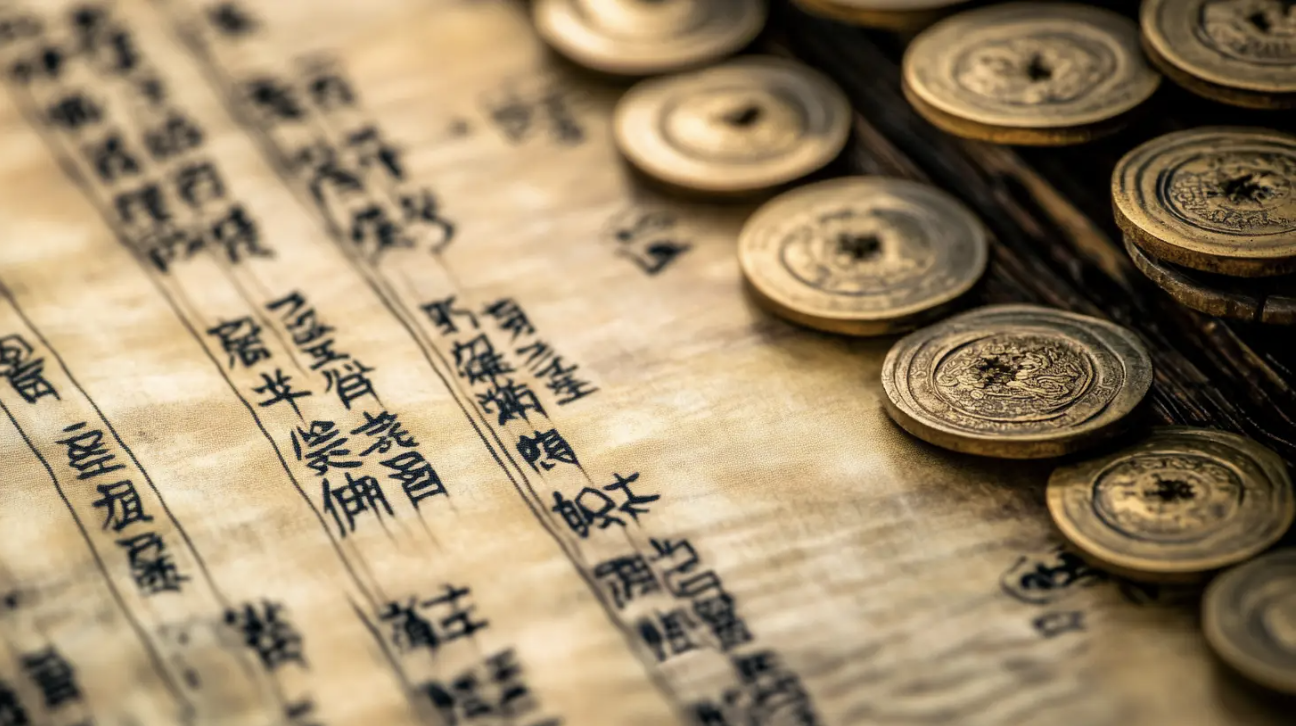
I Ching coins are sacred tools used in I Ching divination, most commonly through the three coins method—one of the most common ways to consult the I Ching, the ancient Chinese Book of Changes. Each coin is based on a traditional Chinese coin design, typically featuring a round outer shape with a square hole in the centre. These coins are not only symbolic but functional, rooted in ancient Chinese metaphysics and the principles of yin and yang.
In this divination practice, users throw the coins—usually three at a time—for six rounds, resulting in six lines that form a hexagram. Each coin toss is interpreted according to whether it lands as heads or tails, generating either a broken line (yin) or a solid line (yang). Together, these six lines reveal a message from the oracle. If certain patterns emerge—known as changing lines—they point to evolving forces or outcomes in a situation, indicating transformation.
This coin method is a simplified version of the more traditional yarrow stalk method, which dates back thousands of years. While yarrow sticks offer a meditative ritual, the coin system allows for quicker consultations. Still, both methods aim to reveal the underlying forces shaping a moment in time—connecting the questioner with the taoist flow of reality. The coins are often tossed into a small bamboo bucket I Ching divination bowl or set on a dedicated cloth for clarity during the casting.
Historically, the coins were modeled after currency from the Qing Dynasty, with emperors like Qianlong and Shunzhi producing beautifully inscribed pieces that are still used today. Whether you’re working with an antique Chinese coin, a replica with a graceful patina, or a polished modern token, the act of coin tosses retains spiritual weight. The shapes and sounds, the randomness, and the yin-yang balance represented in each toss carry deep meaning.
Today, many people integrate Chinese feng shui I Ching techniques, using ching divination coins for success, wealth, and clarity in their homes and personal decisions. These coins often come in a 3-coin set, sometimes bound with a red string, and used alongside a bagua map in feng shui practices. Some sets—like the ones offered in curated kits—can be found on platforms like Amazon. You can view one of the most popular I Ching coin sets here , which includes replicas based on ancient coins, complete with storage pouch and casting instructions.
Whether you’re a beginner learning to throw the coins or a practitioner uploading your own readings to the world on YouTube, the practice of casting the I Ching using ching coins continues to evolve while staying grounded in its ancient Chinese roots. In doing so, it connects past and present—offering not only divination, but also timeless Chinese wisdom through each coin cast.
One of the most respected modern interpreters of the I Ching is Taoist Master Alfred Huang, whose teachings and translations have brought renewed clarity to the text. His works honour traditional roots while making the wisdom of the Book of Changes accessible to a contemporary audience. He provides a deeply reflective lens through which to understand the meaning behind each line of the hexagram, whether it appears as yin lines, yang lines, or a changing line.
The method for casting the I Ching may vary, but the underlying intention remains the same: to synchronise with the present moment and receive guidance from the Tao. After you shake the coins and record their result, you’ll form one of the 64 possible hexagram numbers. These are linked to the eight trigrams, each representing a fundamental element of life—heaven, earth, thunder, water, mountain, wind, fire, and lake.
While modern diviners use coins, in ancient Chinese times some rituals were more elaborate. One such practice involved heating a turtle shell until it cracked, then reading the patterns as divination. Though less common today, it reflects the same desire to tap into hidden patterns of the universe.
Ultimately, whether using ching coins, yarrow stalks, or the symbolic power of the eight trigrams, the I Ching remains a profound Taoist tool. With every line of the hexagram you draw, a deeper dialogue with the cosmos begins.
Get you online free I Ching Consultation
Download the I Ching App. Life's GPS in the palm of your hand.
Useful Links
- Revolutionary I Ching App to harness Insights for Personal Growth, Download AI Ching App
- What is the I Ching
- How to consult the I Ching
- Consult the I Ching Online
- Discover the ‘Daily I Ching’ for universal guidance.
- Access all the I Ching Hexagrams 1 to 64
- Buy the book, Embracing Life’s Journey Your Guide to Personal Growth with the I Ching
- Little Panda Learns the Tao: Stories of Nature’s Balance. Download on Amazon
- Discover Inner Peace, one day at a time